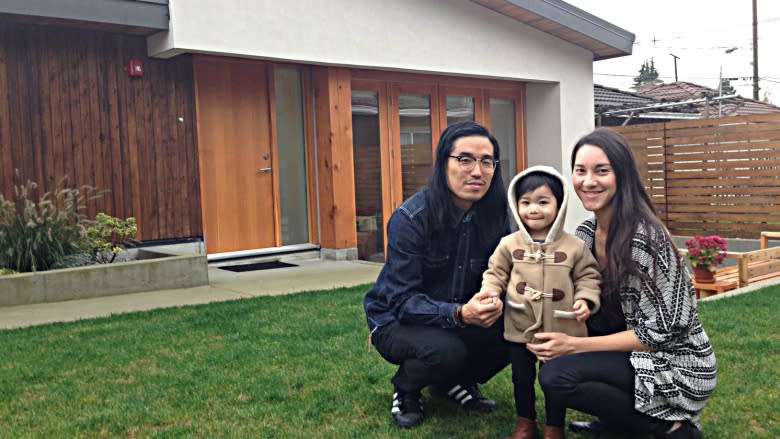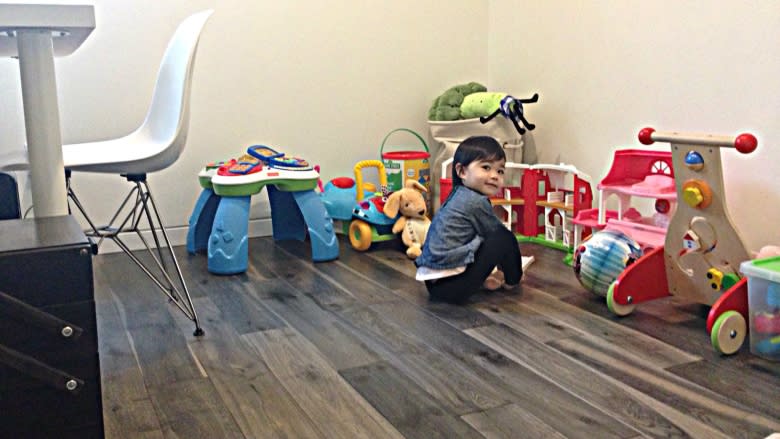Vancouver's laneway love-in: Little homes, big success
It's not the super-high ceilings or the ultra-modern design Jasmine Lee and Vincent Chan love most about their home. The first feature they're eager to point out in their East Vancouver laneway house is the third bedroom.
"It's super important," said Chan, 38. "We needed it to be future-proof, and the third bedroom is key for the possibility of a second kid."
A townhouse seemed like the natural choice for the family of three, but in a city populated by condos and single-family homes, there were few to be found, and those that were out there were pricey.
So Chan, director of textiles with Aritzia, said he floated the idea of a laneway house on his parents' East Vancouver property to Lee, a nursing unit clerk.
She agreed, his parents were thrilled, and a multi-generational living situation was born.
Average laneway home costs $350K
In a city full of stories of families priced out of the city and driven out to the suburbs, the laneway house is a rare example of young families finding a way to cheat the city's exorbitant housing costs.
They get to live in a detached house without the price tag to match. Vancouver's benchmark price for a single family home is between $1.5 million and $2 million while a laneway home costs, on average, $350,000 to build.
With most of Vancouver's single-family neighbourhoods situated on streets with back lanes, there's ample room for homeowners to squeeze in a small house into the backyard. The downside is city rules forbid residents from selling these small homes.
Chan's parents own a home near Commercial Street, a trendy East Vancouver neighbourhood close to shopping and the SkyTrain. The size of any laneway home depends on the size of the property. In the couple's case, city regulations allowed them to build a 940-square-foot home, which is on the larger side for laneway homes in the city.
One year after they moved in, Lee and Chan feel they hit the laneway lottery by having their own home in a great neighbourhood and with that coveted third bedroom and space to spread out.
"We wouldn't have had this amount of outdoor space with a condo or townhome," said Lee, 32.
'An incredibly successful program'
What started off as an experiment in creating density has blossomed into a distinctive feature of Vancouver's housing market.
In 2010, the first full year that permits for laneway homes were granted, the city approved 192 projects. There are now more than 2,000 little homes dotted around the city.
"It's been an incredibly successful program," said Heather Burpee, a senior planner with the city of Vancouver. "It doesn't change the character of the neighbourhood by putting these units on the back, and you get some additional rental and housing stock."
At first, the city fielded complaints from neighbours who felt spied upon from tall laneway houses hovering over their backyards. Now, city data shows the number of complaints has dwindled to just a handful each year, mostly parking related.
Over the last seven years, the city has made some tweaks. The biggest change has been allowing more square footage on one level, which has discouraged owners from building 1½-storey homes that aren't as popular with the neighbours.
More 3-bedroom units needed
Bryn Davidson, co-owner of Lanefab, a company that constructs laneway houses, said a city-wide policy that allows laneway homes to be built in any neighbourhood means no single area has been impacted more than others.
But Davidson said there's room for more improvements.
"In my ideal world, laneways would be 200 square feet bigger," he said.
That, he said, would allow all laneway homes to include that coveted third bedroom.
"That's where we're getting a lot of inquiries now from young families, but it's a challenge."
The next big upgrade, he said, would be to permit homeowners to stratify their properties and allow laneway homes to be sold separately from the main house.
The current rules mean those who add laneway homes to their property may get the space they need but can't build equity.
As a result, many families are drawing up their own ownership agreements to get around this.
What's next
Several other cities in the Lower Mainland have followed Vancouver's density success and have their own laneway-type programs in place.
West Vancouver, the city and district of North Vancouver, and Surrey are among the municipalities that allow their own versions of laneway homes. New Westminster is close to approving a program.
In Vancouver, with laneway homes firmly entrenched in the building stock, the city is moving on.
The focus now is moving from the laneway house to the laneway itself.
The goal is to change lanes from a place where people put out their garbage to more vibrant, family-friendly social spaces.





